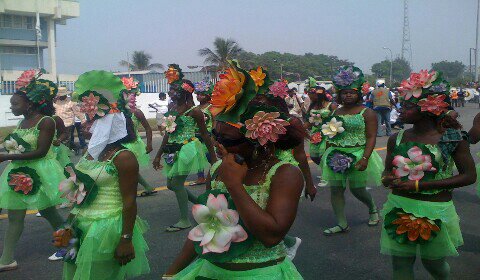Photography being the art of the lens is a major contribution to our appreciation of carnival, or any other scenery of festivity for that matter
Through the lens looking in
by Titi Brenda
Photo celebration of life in carnivals has become an important aspect of modern cultural activity. Images of the bands that make up carnival crew together provide unique artistic possibilities in the bid to depict nature through colours, lines and texture.
Photography being the art of the lens is a major contribution to our appreciation of carnival, or any other scenery of festivity for that matter. Where you observe carnival from their photographic images, several indicators will more objectively emerge to offer perspectives as to degrees of success in costuming, and in their adaptation of nature, being some of the festival’s objectives.
With the art critic looking into the still, two dimensional view of a photographic image, we can easily identify costume art which use frequent lines and pointly curvatures in contrast to other work of a healthy mix of brilliant or dim tones of colour.

- Carnival procession: green for African flora
This brings us to the role and, perhaps most relevant, importance of the photo artist in a visual project of this nature. The trend in photographic imaging is increasingly a fact of modern aesthetic and scientific culture. In fact, photography is sine qua non in the context of many artistic representations past and present.
To buttress, none of the carnival occasions may have had archival records without their still or mobile mprints which render these postures and other works of dramatic actions useable for present or future referencing, analysis and documentation.
It is the same vein in which textiles, ceramics and painting are made permanent and archived for posterity by the nature of methodic creation through photographic art. It is therefore evident that by using photography as one of the major tools for artistic activity we can add value and perspective to the whole scenario of the carnival as total theatre representing nature, human emotions and socio cultural values.
So many facets or perspectives can be realised successfully or otherwise. Through the lens, you may focus on what you believe the most successfully realised renditions of nature by your own instinctive estimation. This is as John Szarkowski (1965) says of the pictorial works of the famous photographer, Edward Weston, as the beauty of a profound intuition.
Soyinka (2011) in a prefatory note on Sumni Cole, rather likens this to the hunter’s instinct, which demands alertness, a quick eye for the opportunity target that slips away fast and becomes impossible to recreate, certainly not with the same truthfulness, or with the spontaneity of unrehearsed recognition.
I believe that here’s when photography becomes art in practice. The artist turns his camera into a medium of dialogue between man and nature, between man and his social milieu. What emerges from the capture is now an intervention. The success or otherwise of such ‘interventionist’ art, however, will still be left to the domain of public reception.
It would be pertinent to borrow a note from Theo Vincent (1984) that art by its very nature tells us more about a people, a society, a situation, an experience, in one compressed whole than any other record can.
The art of photography is certainly one of the most enduring ways of preserving creative ideas, events and memories.
For after the fever and heat of festivities, after the echoes of the dying footfalls of departing celebrants, are not the feelings embedded in the pictorial mementos we cherish often those that transcend time and space?
NEXT: IMAGINING THE ART OF CARNIVAL COSTUMING
Titi Brenda is an art critic and graphic media artist. She can be reached on Twitter @Teetea2
[…] Next: Where Photography Becomes Art. […]